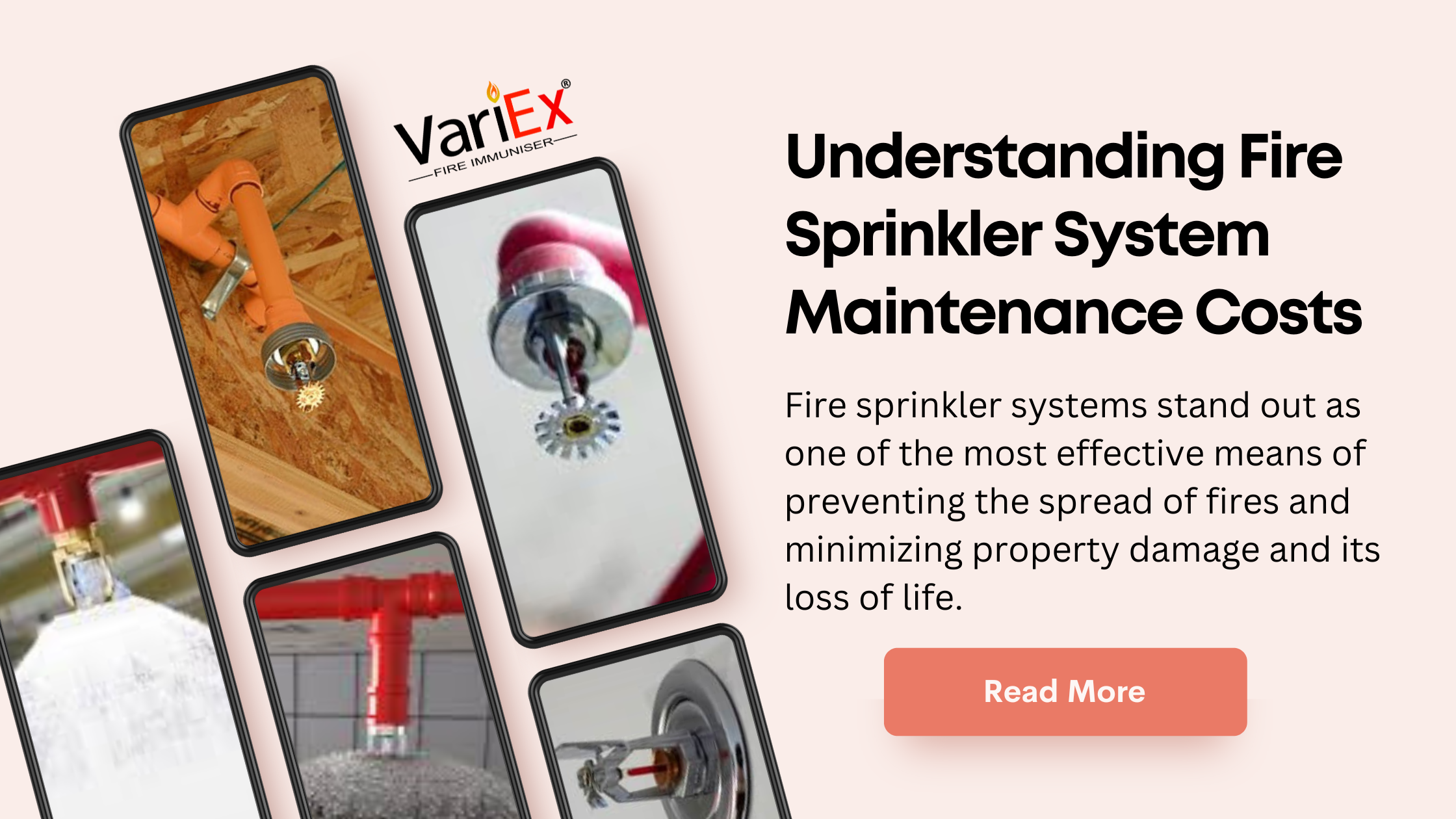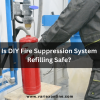![]()
Fire Immuniser
+91-7829629111
Email: info@variex.in
Varistor Technologies Pvt. Ltd.
Block-1, First Floor, Ardente Office One, Hoodi Circle, ITPL Main Road, Bengaluru, Karnataka 560048, IN
Understanding Fire Sprinkler System Maintenance Costs
Fire Safety is a concern for any building if it's a residential, commercial, or industrial space. Whatever the fire protection measures available. Fire sprinkler systems stand out as one of the most effective means of preventing the spread of fires and minimizing property damage and its loss of life. A fire sprinkler system is not that enough. Regular maintenance is quite important and it's necessary to maintain and these systems remain reliable and most effective in the event of a fire. This blog will give you an importance of fire sprinkler system maintenance and if we discuss about its benefits, key components, maintenance requirements, and it has the potential to neglect it.
The Importance of Fire Sprinkler Systems:
Fire Sprinkler System is an important part of building an fire extinguisher infrastructure. Fire Sprinkler System has to be done in a way that this automatic response can significantly reduce the time it takes to suppress a fire, limiting its damage and potentially saving lives. Fire extinguishers, sprinkler systems are designed to automatically detect and extinguish fires, or at least control their spread until firefighters arrive. This automatic response can significantly reduce the time it takes to suppress a fire, limiting its damage and potentially saving lives.
Understanding the components of a fire sprinkler system is essential for comprehending the importance of maintenance. While system designs can vary, most fire sprinkler systems consist of several key components:
- Water Supply: A reliable water supply, often from the building's municipal water system or a dedicated water tank, is essential for supplying water to the sprinkler system in the event of a fire.
- Piping: Pipes distribute water from the water supply to the sprinkler heads throughout the building. These pipes are typically made of metal, such as steel or copper, to withstand high pressures and temperatures.
- Sprinkler Heads: Sprinkler heads are strategically placed throughout the building and are designed to release water when exposed to sufficient heat, typically from a fire. Different types of sprinkler heads may be used depending on the application, such as upright, pendant, or sidewall heads.
- Control Valve: A control valve regulates the flow of water into the sprinkler system. It is typically located near the water supply and can be manually or automatically operated to activate or deactivate the system.
- Alarm System: Many fire sprinkler systems are equipped with an alarm system that activates when the system detects a fire. This alarm alerts building occupants and emergency responders to the presence of a fire.
- Localized Suppression: Fire sprinkler systems are designed to target the area directly affected by a fire, minimizing damage and preventing its spread to other parts of the building. By containing fires to their area of origin, sprinkler systems help limit the extent of property damage and reduce the risk to occupants' lives.
- Life-saving Potential: Perhaps the most crucial aspect of fire sprinkler systems is their potential to save lives. Studies have shown that buildings equipped with properly installed and maintained sprinkler systems experience significantly fewer fatalities and injuries in fires compared to those without sprinklers. The rapid suppression of fires by sprinkler systems provides occupants with valuable time to evacuate safely and for firefighters to arrive and complete rescue operations.
- Property Preservation: In addition to saving lives, fire sprinkler systems play a crucial role in preserving property. By quickly controlling or extinguishing fires, sprinklers help minimize damage to buildings, contents, and valuable assets. This can result in substantial cost savings for building owners and insurance providers by reducing repair and replacement expenses.
- Reliability and Effectiveness: Fire sprinkler systems have a proven track record of reliability and effectiveness in real-world fire scenarios. When properly installed, maintained, and activated, sprinklers have been shown to suppress or extinguish fires in a vast majority of cases, providing peace of mind to building occupants and owners alike.
Code Compliance and Insurance Benefits: Many building codes and regulations require the installation of fire sprinkler systems in various types of occupancies to ensure compliance with fire safety standards. Additionally, buildings equipped with sprinkler systems may qualify for reduced insurance premiums due to their lower risk profile. This highlights the widespread recognition of the importance of sprinkler systems in mitigating fire-related risks.
 Fire Sprinkler Maintenance cost in detail:
Fire Sprinkler Maintenance cost in detail:Fire sprinkler system maintenance costs can vary depending on factors such as the size and complexity of the system, frequency of inspections, and any necessary repairs or replacements. Generally, maintenance expenses encompass routine inspections, testing, and addressing identified issues to ensure the system's proper functionality.
Routine inspections, typically conducted by qualified professionals, involve examining the system for leaks, corrosion, damaged components, and obstructions. Testing may include flow tests, alarm tests, and valve operation tests to verify the system's performance. Any issues identified during inspections or testing may require repairs or replacements, such as fixing leaks, replacing damaged sprinkler heads, or upgrading outdated components.
While maintenance costs can fluctuate based on the specific needs of the system and building, budgeting for regular maintenance is crucial for ensuring the system's reliability and compliance with regulations. Investing in proactive maintenance measures can help mitigate the risk of costly repairs or replacements resulting from neglected maintenance. Additionally, some building owners opt for service contracts with fire protection companies, providing comprehensive maintenance services for a fixed fee, which may help streamline maintenance costs and ensure consistent upkeep of the system.
Wrapping Up:
Frequently Asked Questions
A typical fire sprinkler system maintenance service includes inspections of sprinkler heads, pipes, valves, and control equipment. Technicians check for leaks, corrosion, obstructions, and proper water flow. They may also test alarms, pumps, and backup power systems, while ensuring compliance with relevant codes and standards.
Final Say
At VariEx.in and VariexOnline.com, we specialize in supplying and installing top-quality fire fighting systems and equipment. From fire extinguishers to advanced suppression systems, we offer comprehensive solutions tailored to your needs. Our experienced team ensures precise installation and maintenance for optimal safety.
Trust VariEx for reliable fire protection. Contact us online or call 7829629111 to learn more.










